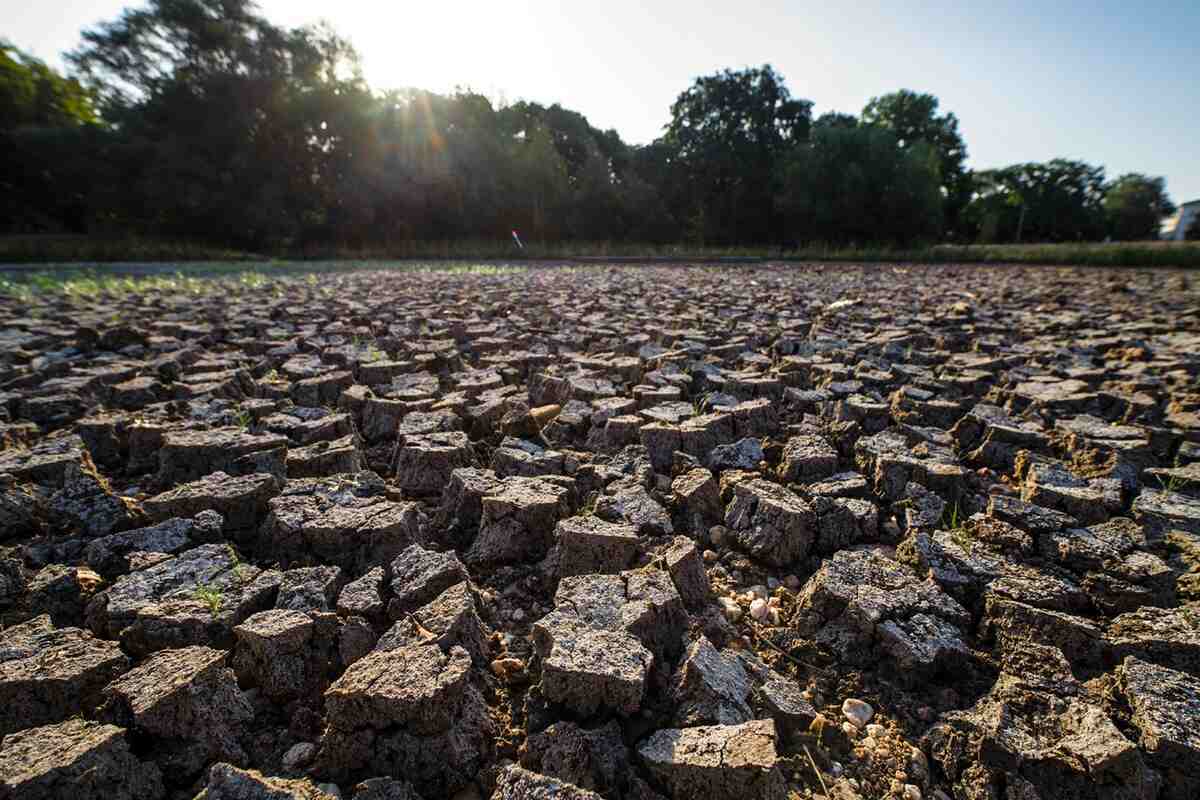Uncovering the impact of climate change: Extreme heat in the soil

Soil temperatures have been often ignored for a long time, and there is hardly any reliable data available about it, unlike air temperatures near the surface. Measuring soil temperature is more complex, which resulted in a lack of attention. However, a research team led by the Helmholtz Centre for Environmental Research (UFZ) in Germany has discovered that soil and air temperatures can differ and climate change has a much greater impact on the intensity and frequency of heat extremes in the soil than in the air. This is particularly true in Central Europe, according to a recent study by scientists.
In a recent study, a team of researchers led by Dr Almudena García-García from UFZ collected data from various sources, including meteorological measuring stations, remote sensing satellites, the ERA5-Land data reanalysis set, and supercomputing simulations of Earth system models. The team used this data to calculate the TX7d index, which reflects the intensity of heat extremes by averaging the daily maximum temperature in the hottest week of the year. The index was calculated for the 10-cm-thick upper soil layer and the near-surface air at a height of up to 2 m for the years 1996 to 2021. The researchers found that at two-thirds of the 118 meteorological measuring stations evaluated, the trend in heat extremes is stronger in the soil than in the air. This suggests that heat extremes develop much faster in the soil than in the air, especially in Germany, Italy, and southern France. According to station data, the intensity of heat extremes in Central Europe is increasing 0.7°C/decade faster in the soil than in the air.
The research team also looked at the frequency of heat extremes in the soil using the TX90p index. This index considers the percentage of days per month when the daily maximum temperature was higher than the statistical limit between 1996 and 2021. The calculations showed that the number of days with heat extremes is increasing twice as fast in the soil as in the air.
"For example, if there are currently high temperatures in the soil and air on 10% of the days in a month, a decade later, there will be high temperatures in the air on 15% of the days and high temperatures in the soil on 20%", says García-García. Soil moisture is a key factor that affects the exchange of heat between the air and soil. The amount of soil moisture depends on the type of land cover. Trees in forests can draw water from deep in the soil with their roots, thus reducing water loss through evaporation during the summer. However, crops and grasslands can only access water from the soil surface. It's worth noting that soil temperature can rise much faster than air temperature, causing additional heat to be released into the lower atmosphere if the soil temperature is higher than that of the air. As a result, atmospheric temperatures are likely to increase.
"Soil temperature acts as a factor in the feedback between soil moisture and temperature and can thus intensify heat periods in certain regions", explains Dr. Jian Peng, co-author and head of the UFZ Remote Sensing Department. This feedback affects agriculture, ecosystems, and carbon storage. "In view of these results, studies on the effects of heat extremes, which consider mainly air temperatures but have underestimated the factor of heat extremes in the soil, would have to be re-evaluated", he says.
The research team used Earth system supercomputer models to investigate how extreme soil temperatures could amplify heat waves in the atmosphere, based on different global climate scenarios. They discovered that if the 2-degree or 3-degree scenario occurs, Central Europe will be more severely impacted than with a 1.5-degree warming. For instance, there could be 8% more hot days when soil releases heat into the atmosphere, intensifying periods of hot weather in the air. García-García mentioned that this can imply that soils will play a more crucial role in the development of heat extremes.
To conclude, climate change is increasing extreme heat in the soil, which can have severe implications for soil health, and the plants and animals that rely on it. This emphasizes the significance of reducing emissions and taking action to mitigate the effects of climate change to protect our soils and the ecosystems they support.

 How to resolve AdBlock issue?
How to resolve AdBlock issue?